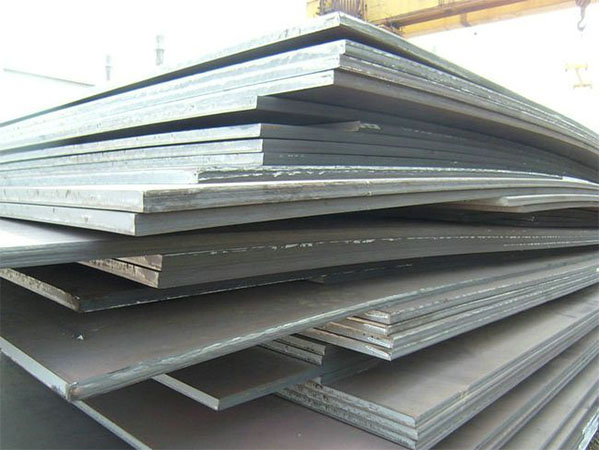Both ASTM A283 and ASTM A36 steels are general-purpose structural grade carbon steels, and they each have their own characteristics in terms of strength, toughness and processing performance. A36 is widely used in construction, Bridges and oil platforms due to its excellent weldability and stable structural performance, while A283 offers a variety of grades ranging from low to medium strength, suitable for storage tanks, low-pressure vessels and general structural applications. By comparing these two types of steel plates, we can have a clearer understanding of their respective advantages and applicable scenarios, thereby providing references for engineering design and material selection.
ASTM A36 steel plate:
The minimum yield strength of this steel plate is 36,000 psi (approximately 250 MPa), and it possesses all the performance characteristics suitable for structural engineering, including welding, bolt connection and riveting manufacturing. A36 carbon steel is widely used in structural projects such as buildings, Bridges and oil platforms, and is a commonly used grade of structural steel.

ASTM A283 steel plate:
This steel plate is A standard specification for low to medium tensile strength carbon steel, covering four grades: A, B, C, and D. Among them, Grade C is more widely applicable and is suitable for general structural uses, such as manufacturing storage tanks and low-pressure, temperature-controlled containers, etc. A283 steel plate is formed through smelting process and can be produced in open hearth furnaces, electric furnaces or converters (oxygen top-blowing).
|
Category
|
ASTM A36
|
ASTM A283 (Grade C)
|
|
Standard
|
ASTM A36/A36M
Carbon Structural Steel Plate
|
ASTM A283/A283M
Low/Intermediate Tensile Strength Carbon Steel Plate
|
|
Yield Strength
|
≥ 250 MPa (36 ksi)
|
≥ 205 MPa (30 ksi)
|
|
Tensile Strength
|
400–550 MPa (58–80 ksi)
|
380–515 MPa (55–75 ksi)
|
|
Elongation
|
≥ 20%
|
≥ 20%
|
|
Carbon Content
|
≤0.26%
|
≤0.24%
|
|
Weldability
|
Good
|
Excellent
|
|
Applications
|
Bridges, buildings, heavy structures
|
Pressure vessels, storage tanks, boilers
|
The advantages of A36 steel plate
Economical and practical: A36 steel plate is made through hot-rolling process, with a simple and stable chemical composition. Compared with similar structural steel materials, it offers a higher cost performance and is an ideal choice for large-scale engineering and construction projects.
Outstanding welding performance: A36 steel plate can adapt to various standard welding methods, including arc welding, gas welding and gas shielded welding, making it perform exceptionally well in the processing and assembly of structural components.
Good ductility and processability: Even in low-temperature environments, A36 steel plates still have excellent plasticity and forgeability, making them convenient for cutting, bending and stamping, and suitable for the manufacturing of various complex structural components.
Enhanced durability: Although its inherent corrosion resistance is limited, its service life in outdoor or humid environments can be significantly prolonged through spraying, anti-rust treatment or hot-dip galvanizing processes.
Flexible application: A36 steel plate is widely used in various projects such as Bridges, building structures, lifting equipment and oil platforms. Its strength, toughness and reliability make it a commonly used standard for structural steel.
Frequently Asked Questions (FAQ)
Q1: Can A36 steel plates be used in outdoor environments?
A: Yes, but additional protective measures are needed, such as painting, anti-rust coating or hot-dip galvanizing, to enhance corrosion resistance.
Q2: Which structural components are suitable for welding A36 steel plates?
A: Suitable for various structural components that require welding, riveting or bolt connection, including building frames, bridge supports and oil platforms, etc.
Q3: What advantages does A36 have over other carbon steels?
A: A36 offers high cost performance, good weldability and excellent processing performance, making it suitable for most general structural applications.
Q4: Can A36 steel plates undergo heat treatment?
A: A36 is typically used as a hot-rolled finished product without the need for additional heat treatment, maintaining good toughness and ductility.
Q5: What is the range of thickness and size options available?
The common thickness of A36 steel plates ranges from 3mm to 200mm, and the width and length can be customized according to processing and transportation requirements.
Read more : What is the meaning of A36 plates
